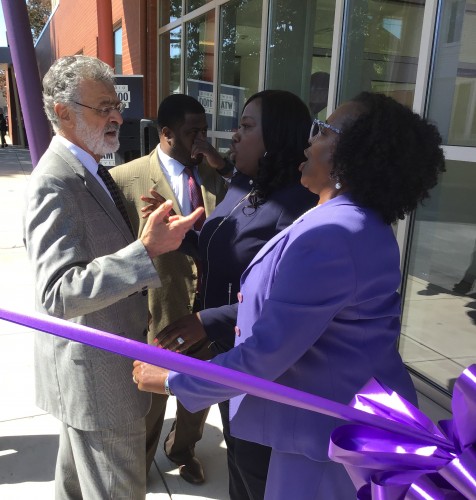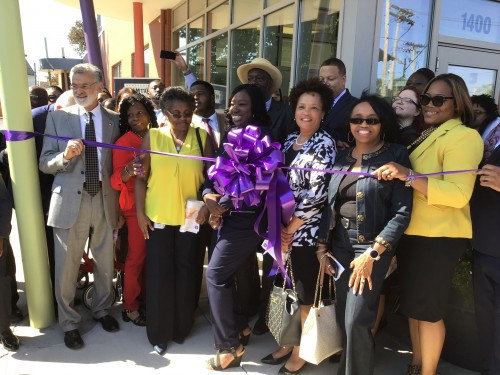CLEVELAND, OH – Anita Bradley’s request to her board chairman to purchase a permanent location for the Northern Ohio Recovery Agency (NORA) was met with an immediate “yes.”
Carolyn Cleveland knew the plans the agency’s chief executive officer was implementing to provide assistant to greater Clevelanders seeking addiction recovery help. A permanent location between two interstates and within access to several major public transportation routes made sense. The price of the building was even better.
Instead of paying rent NORA would become a property owner with room to grow. People experiencing addiction and seeking help would always know where to go to find it.

Ohio’s drug statistics show a correlation between the terms in office and political perspective shifts between Richard Cordray and Richard Michael DeWine as the state’s attorney generals. Cordray didn’t target Ohio’s physicians and call them drug dealers. DeWine did shortly after he took office in January 2011.
84 Ohioans died of heroin and fentanyl overdoses between Cordray’s last year in office and 2013 before DeWine targeted 61 doctors he called “drug dealers” without proof and pressured them out of business. No federal or state prosecutor backed DeWine’s claim against them. Only one lost his medical license, James Lundeen, after a hearing before the state’s medical board he wasn’t allowed to attend. The board’s members were legally-advied by one of DeWine’s assistant attorney generals.
With doctors too fearful to prescribe pain medications to people who needed it their patients went to the streets. There they found cheaper heroin and other narcotic drugs along with fentanyl.
The narcotic death toll jumped to 504 by 2014. It didn’t stop as DeWine’s war against doctors continued. Overdose deaths from fentanyl grew to 1155 in 2015 to 2357 in 2016. Overdose deaths overall in Ohio topped 4854 in 2017 for a total of 20,000 dead Ohioans since DeWine’s attack on the state’s pain management physicians began in 2011.

In the story DeWine acknowledged the role he was playing in feeding the need for street narcotics by creating fear among physicians who prescribed medications for pain to stop it.
“We certainly don’t want to deny these pain medications to anybody who really needs them, but they can be very addicting. Many times, these people who were addicted to pain medication would switch to heroin because heroin is cheaper. Babies are born to addicted mothers.” DeWine said.
Cuyahoga County’s addiction problem grew worse when Johnson & Johnson pharmaceuticals sent over 50 million doses of fentanyl to it … alone. That’s 50 doses for each of the county’s 1 million residents. The use of it became so routine Cleveland’s Louis Stokes Veterans Administration Hospital uses it for routine procedures like colonoscopies. [NOTE: This writer recently rejected being injected with fentanyl during a colonoscopy at the Louis Stokes VAH and remained conscious during the procedure.]

Bradley extended “strategic” invitations to key political figures in Cleveland to join her for the September 20, 2019 grand opening of NORA’s headquarters at 1400 55th Street. Cleveland Mayor Frank Jackson made his presence felt knowing it would be his health department, EMS workers and police responding to the emergencies and crime residents and visitors of the city using and trafficking in narcotics would bring to the neighborhoods he protected.
Bradley’s guest list included County Councilwoman Yvonne Conwell and State Rep. Terrence Upchurch. Cleveland Municipal Court judges Emmanuella Groves and Lauren Moore attended. William Denihan, the ADAMS Board’s retired chairman, blessed the event Denihan reminded Bradley not to relent in pursuing every available dollar needed to help the agency’s clients.
By collaborating with front line elected and appointed public officials who fund and oversee bureaucracies that interact with citizens struggling with addiction or recovery, Bradley sees them as organizing to use NORA as a “command center” like presence in the city for strategy and community meetings.
Anyone who knows Bradley as a professional manager understands she’s already thinking in terms of the “programs” she can use the space to create. NORA’s equipped with a professional kitchen. There are few limits in NORA’s new headquarter’s ability to serve people in recovery; including those needing temporary housing.
The intentional distribution of legal and illegal narcotics to Ohio and Cuyahoga County, along with bad public policies from publicity-motivated elected officials, hace created a “predicted” epidemic for the people living around NORA’s new E. 55th Street headquarters “inside” the City of Cleveland.
What those experiencing addiction and needing help will know is that when they’re ready to change their lives 1400 E. 55th Street is open for business to help them.





